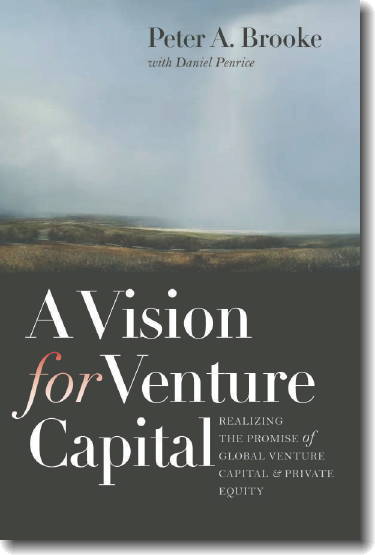Profounder: A Huge Step Forward For Crowdfunding
 Saturday, May 8, 2010 at 1:27PM
Saturday, May 8, 2010 at 1:27PM I've written about the compelling idea of crowdsourcing a venture capital fund a number of times (in fact these posts are consistently the most searched for and trafficked). The premise is that a web-based venture capital fund, with a large crowdfunded investor base and crowdsourced decision making led by knowledgeable investors can be a highly effective way to successfully indentify, invest in, and grow technology startups. By compiling a large base of tech-savvy investors who are involved in the decision making process you have a better chance of identifying the best new startups and once you do, you instantly have a large base of supporters and customers. This type of fund would have a set of leaders to guide the decision making process and also provide more hands-on support to portfolio companies, but all investors would participate through voting - a chance to invest in startups in a way like never before. All this sounds great, but the major issue preventing something like this from working is that normal people are prohibited to invest in such a fund due to SEC Regulation D which requires investors in private companies and funds to meet minimum income and net worth thresholds.
I’ve run into a few groups that have attempted workarounds (unsuccessful for the large part); however, recently launched Profounder has made impressive progress. The site, which allows entrepreneurs to raise funding for their ideas/companies from their community, was started by Dana Mauriello and Jessica Jackley, a co-foucner of Kiva.org. While not yet fully developed the site gives plenty of information on how the process will work: Entrepreneurs will first create a “Raise Page” which outlines their business plan and how much they are looking to raise. Profounder will then create a term sheet and combine it with the pitch on a custom password protected page which entrepreneurs share with friends, family and colleagues they have a substantial pre-existing relationship with. Once individuals are invited to view the business fundraising page, they will have 30 days to contribute funding. The funding must be repaid (automatically withdrawn by Profounder each month) along with a percentage of the business’ revenues each year. Profounder makes money by assessing a fee (not yet determined) on the total amount raised.
Here are potential keys to avoiding SEC issues I came away with:
- Password protected pitch page
- The need to have a “substantial pre-existing relationship” with potential investors
- Investors have 30 days to contribute funding
- Entrepreneurs can only raise up to $1 million
- Entrepreneurs must provide investors with a certain percentage of revenue each year - notice you are not offering up equity in the company
- Limited to 35 investors, all other investors after the 35th cannot receive a percentage of revenue, instead you reward them for their contribution by giving that same percentage of revenues to a nonprofit in their honor.
Clearly there are limits to Profounder’s model but it’s the most progress I’ve seen in the crowdfunding movement for entrepreneurs. Profounder does a great job of highlighting the benefits of crowdfunding:
- allows you to take advantage of your biggest existing resource: your community
- can be a marketing tool in addition to a financing tool, as those invested in your business will become more loyal customers and avid supporters
- shares risk among many, putting less financial pressure on just a few individuals
- allows for your successes to be shared among many
- cuts out banks, venture capitalists and professional investors to get better terms and a friendlier process
It will be extremely interesting to watch the progress of Profounder – its success would go a long way in not only proving the crowdfunding model but more specifically the impact it can have on entrepreneurship and innovation. Look for more updates from me on Profounder’s progress and how its success can potentially make a crowdfunded venture fund a possibility.
UPDATE (06/06/2010): Looks as though Profounder has gone stealth and will not be open to the public until the fall. The information used in this post has been pulled and is probably subject to change.

